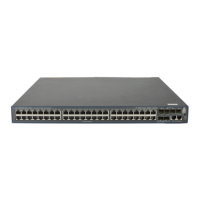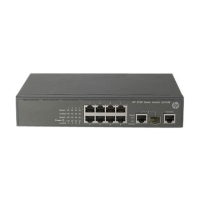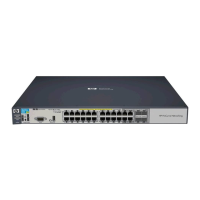243
Ste
Command
Remarks
2. Specify a name for the public
key and enter public key view.
public-key peer keyname N/A
3. Enter public key code view.
public-key-code begin N/A
4. Configure the peer public key.
Enter or copy the key
Spaces and carriage returns are
allowed between characters, but
are not saved.
5. Return to public key view.
public-key-code end
When you exit public key code
view, the system automatically
saves the public key.
6. Return to system view.
peer-public-key end
N/A
Displaying and maintaining public keys
Task Command Remarks
Display the local public keys.
display public-key local { dsa | ecdsa | rsa }
public [ | { begin | exclude | include }
regular-expression ]
Available in any view
Display the specified or all peer
public keys on the local device.
display public-key peer [ brief | name
publickey-name ] [ | { begin | exclude |
include } regular-expression ]
Available in any view
Public key configuration examples
Unless otherwise noted, devices in the configuration examples are operating in non-FIPS mode.
Manually specifying the peer public key on the local device
Network requirements
As shown in Figure 77, to prevent illegal access, Device B (the local device) authenticates Device A (the
peer device) through a digital signature. Before configuring authentication parameters on Device B,
configure the public key of Device A on Device B.
• Configure Device B to use the asymmetric key algorithm of RSA.
• Manually specify the host public key of Device A's public key pair on Device B.
Figure 77 Network diagram
Configuration procedure
1. Configure Device A;

